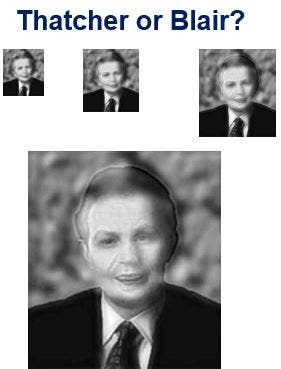This hybrid image combines low spatial components of a photo of Marilyn Monroe and high spatial frequency components of an image of Albert Einstein. At lower resolution (look at your computer screen from farther away), the low spatial component is more dominant, while at closer up the higher frequency should be more persistent. So, as the image gradually enlarges people with good eyesight should see Albert Einstein, while those with poor vision will pick up a blurry image, according to researchers at the Massachusetts Institute of Technology (MIT) who made the optical illusion.
A video produced by ASAP Science demonstrates this caveat and has already gone viral on YouTube.
“Depending on how well you’re able to focus or pick up contrast your eye will only pick out details. Up close, we’re generally able to pick up fine details like Einstein’s moustache and wrinkles.”
“Up close, we’re generally able to pick up fine details like Einstein’s moustache and wrinkles,” the video says. “But as the distance increases, or if your vision is poor and creates a more blurred image in the first place, your ability to pick up details fades away.”
The same MIT team created several other similar hybrid images transforming a man into a woman, a cheetah into a tiger, a bicycle into a motorcycle, and even a dolphin into a car. Perhaps the most creepy is one where Margaret Tatcher is superimposed over Tony Blair. Apart from being a simple eyesight test, the optical illusions help computer scientists devise machine learning algorithms that might be able to discern objects and the environment akin to how humans do.











